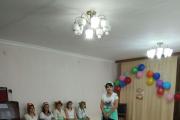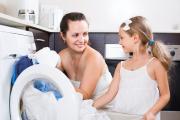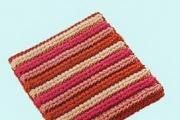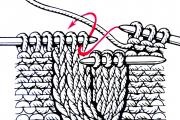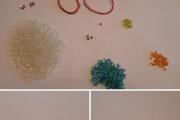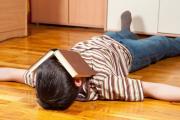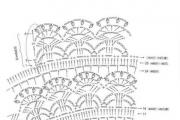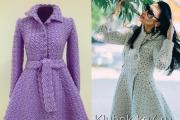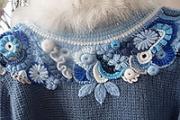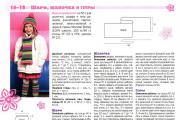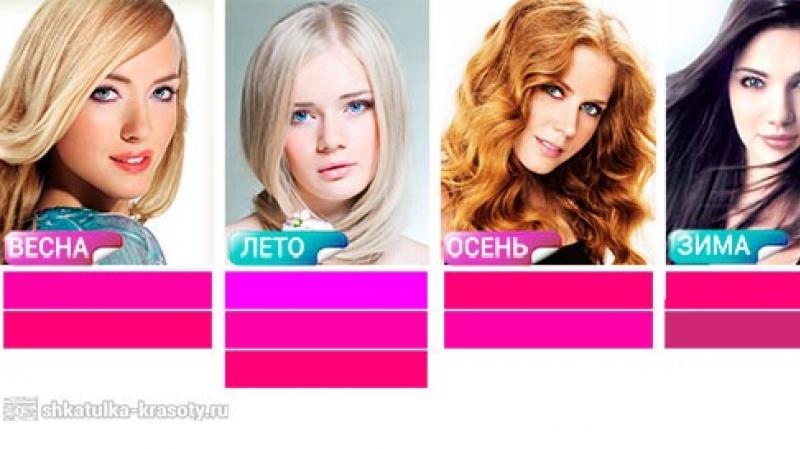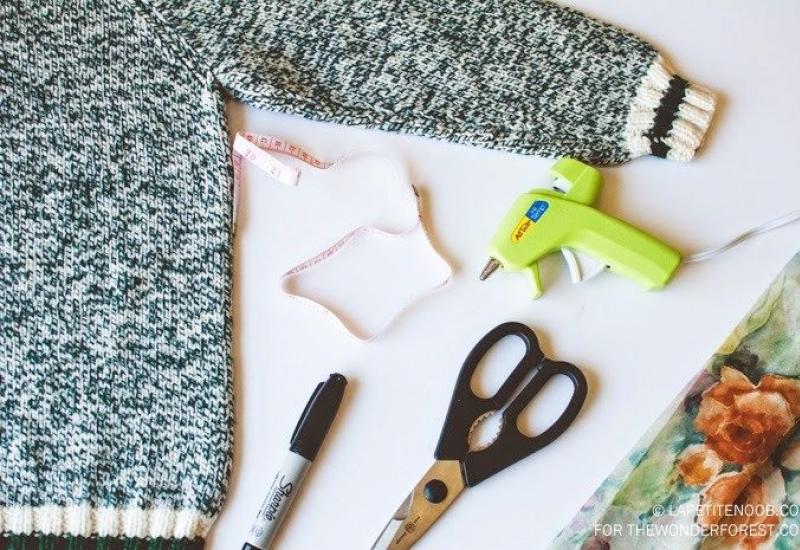A one-year-old child fell and hit his head. Measures to prevent possible falls
When should you see a doctor, and in what cases can you get away with applying a towel with ice? We will talk about this and the alarming symptoms in children after falls below.
Why do babies hit their heads most often?
Mechanical injuries of the skull are one of the most common reasons calls from frightened parents to traumatology departments. This is not at all due to children’s “pin-butt”, but due to the special children’s anatomy.
The fact is that in children under the age of five, the head weighs about a quarter of the weight of the entire body. Accordingly, when falling, it hits first. Since there is no instinct of self-preservation yet and coordination is poorly developed, the baby does not put his hands in front of him in flight, hence increased likelihood concussions and other troubles.
The “fontanelles” that do not overgrow until they are one year old save babies from severe head injuries when falling, and large number cerebrospinal fluid in the skull, which can soften the fall.
Fortunately, most falls result only in fear and bruises for children and frayed nerves for parents. And yet, everyone should know the warning signs when it is necessary to provide first aid to the baby.
How to recognize the risk of impact?
When babies begin to crawl and then walk, they very often stumble, hit, fall (and often from a height greater than their height), resulting in bumps, abrasions, hematomas and bruises on the head. How can one accurately recognize how dangerous this particular blow or bump is to a fidget’s health? Should I show my child to a pediatrician, neurologist, or go straight to the emergency department traumatology?
Frontal head injury
If, after falling or hitting an obstacle, a huge bump on the baby's forehead swells, this is quite normal. Severe swelling is due to a large number blood vessels bursting due to mechanical trauma in the soft tissues of the skull. Hematomas on the forehead most often round shape, they quickly subside and stop bothering the fidget and his parents, in most cases they do not have severe consequences.
However, all this is true for older children; falling and hitting the baby’s head should not be ignored - take the baby to the pediatrician, even if you think that there is no danger. Experienced doctor will examine the baby and reassure the parents.
Trauma to the back of the head
A blow to the back of the head is a serious reason to go to the emergency room children's department traumatology or to a pediatrician: often such injuries have quite serious consequences. And the younger the baby, the sooner you need to see a doctor; delay can cost the child his sight, because in the occipital part of the skull there are nerve endings, connecting the visual center of the brain and the eyeballs.
In addition to vision problems, the child may have impaired coordination of movements and develop tremors. There is a high probability of neurological developmental abnormalities.
First aid for mechanical injuries of the skull

After a fall, do not hesitate to inspect the injured area and assess the severity of the injury. Then provide first aid and, if necessary, call an ambulance. If the bump or cut on your head is very large and looks scary, take a photo of the wound on mobile phone for a doctor (swelling of the soft tissues on the head can go away very quickly).
If a large lump or hematoma appears on the baby’s head
Calm the baby and apply a cold compress or just a bottle of water to the injury site. cold water, wrapped in thin fabric. Keep the compress on for five minutes and remove it for two to three minutes (to restore blood circulation). This will ease the pain a little and stop internal bleeding. Then apply the compress again for five minutes. Repeat these steps for about 20-30 minutes - it is during this time that the final formation hematomas.
If there is a bleeding abrasion on the forehead or back of the head
Use a sterile cotton swab or a piece of bandage moistened with hydrogen peroxide to treat the abrasion, stop the bleeding by simply pressing a clean, dry bandage onto the wound (press lightly for three to five minutes).
For a child over two years old who can tolerate a slight tingling, the abrasion can be disinfected with rubbing alcohol, vodka, or washed with soap.
If blood continues to flow despite all manipulations, call ambulance.
If after the fall you find no damage
Behave as usual, calm the baby and caress him. Constantly watch his behavior - any oddities should alert you. The child may begin to be capricious, complain of headaches and nausea, get tired quickly and sleep for an unusually long time - all this alarm bells, indicating a possible concussion or neurological problem.
If your child cries after hitting his head, complains of nausea and migraines, loses consciousness and is uncoordinated, call an ambulance immediately.
How to behave if there is a slight suspicion of a concussion?
If the baby is old enough to explain his condition to his parents (he can tell where he hurts, that he is sick or dizzy), and you cannot see good reasons take him to the doctor, but doubts remain, just watch.
- Immediately after the fall, calm the baby down and put him in bed, keep him busy with quiet games and stories, and read a book. Explain that everything is fine, but now you need to lie still for a while.
- Monitor your baby for several hours for any warning signs. Don't let yourself fall asleep for at least three to four hours: in your sleep you can miss the deterioration of a concussion.
- If the child is very young, wake him up at night and monitor his coordination of movements.
- Observe the fidget for three to four days: if during this period warning signs was not noticed, the injury passed without complications.
Bad Signs of a Head Injury

Any bruise of the skull requires careful long-term observation by parents at home or doctors in a hospital. To be on the safe side after an injury, if you decide to leave your baby at home, exclude his physical and mental stress: prohibit him from reading, watching TV or playing on the computer. Exception - quiet classical music. If the complications described below occur, take your baby to the pediatrician.
Alarming symptoms after a blow to the frontal part of the skull
After hitting the forehead or falling face down, the baby may experience following symptoms indicating dangerous complications:
- a depression (dent) on the forehead instead of the usual bump;
- the lump is abnormal large size;
- vomiting and nausea;
- dizziness, fainting;
- uncontrollable crying, hysteria;
- heavy breathing;
- paleness of facial skin;
- cyanosis of the nasolabial triangle;
- enlarged pupils, the appearance of strabismus;
- lethargy and lethargy;
- difficulty speaking;
- incoordination, stiffness of movements;
- bleeding from the ear or nose.
If a child exhibits at least one of these symptoms after hitting his head, call an ambulance immediately!
Place your baby on a sofa or bed on his back or side (for babies who are unable to roll over on their side if they vomit) and do not give any medications yourself: this can make it very difficult for doctors to diagnose.
Alarming symptoms after a blow to the back of the head
Occipital mechanical injuries can cause all of the above signs, as well as the following symptoms:
- numbness of the limbs;
- memory loss;
- double image in the eyes;
- loss of consciousness;
- severe headaches and dizziness.
According to statistics, it is the occipital injuries of the skull that most often lead to concussions, so they must be taken seriously.
Kids fall backward when they begin to move independently, with light jolts and loss of balance, while teenagers fall during fights, while roller skating or regular skating. Older children should be required to wear a helmet on their head to prevent injury.
Possible consequences

The head is one of the most important and vulnerable parts of our body, which is why injuries to the skull can have irreversible consequences that cause trouble for a lifetime. After head impacts, the child should be monitored. It is quite possible that he will become whiny, begin to sleep poorly and learn school material worse.
Consequences of injury to the frontal part of the skull
There are several types of injuries after a blow to the forehead:
- Open - soft tissues and bones of the skull are damaged, the injury is accompanied by bleeding and loss of consciousness, painful shock. In these cases, immediate hospitalization is necessary.
- Closed -soft fabrics and the bone is intact. There are varying degrees severity and require different treatment tactics.
- Brain contusion is a serious condition, usually accompanied by prolonged loss of consciousness, nose or ear bleeding. Bruises appear around the eyes, speech is difficult. One of the facial nerves responsible for facial expressions may be affected.
- A concussion is a common condition that occurs after severe trauma to the skull. It is characterized by vomiting and constant nausea, dizziness, bluish lips and pallor skin on the face. In some cases, these symptoms may not be present, but unusually poor, restless night sleep restlessness is a reason to see a doctor. In case of a concussion, a week of bed rest with a minimum of brain activity is prescribed.
- Hematoma or lump accompanied by soft tissue swelling. The baby cries for a short time, shortly after elimination pain he calms down and forgets about the incident.
Consequences of trauma to the occipital part of the skull
In addition to the above complications, blows to the back of the head can have the following consequences:
- absent-mindedness, inattention;
- incoordination of movements on one side (usually the one where the blow landed);
- memory impairment;
- insomnia;
- the appearance of constant migraines.
How to avoid injuries?

- Never leave your baby on a sofa, a bed without sides or a changing table - he can instantly fall. It’s better to sit him on the floor or in his crib.
- If you are sitting on the sofa with a baby, place a couple of large pillows on the floor - this will soften the fall in case of your oversight.
- Always secure your baby with a seat belt when using a stroller or car seat.
- When your child begins to learn to walk, a thick carpet will come to your aid - your feet won't slip on it, and falling won't hurt as much.
- Buy socks with rubber bumps on the soles for your fidget - this will make it easier for him to walk and prevent him from falling.
- Make your child wear a helmet when rollerblading, skating, biking, or scootering.
- Make your apartment as safe as possible: buy rubber pads for sharp corners of furniture.
Unfortunately, the baby often ends up on the floor. What should parents do in this case?
Dangerous heights or where a child could fall
little child From birth he is surrounded by care and attention. His loved ones are doing everything possible to ensure that the baby’s health is not in danger. But even the most attentive mother may make a mistake. Sometimes you just need to turn away for a second and the baby is already on the floor.
The fact is that not everyone correctly imagines the capabilities of the baby. Even a newborn child, making chaotic movements with his arms and legs, may well move to the edge and fall, although the likelihood of this is small.
Particularly dangerous places from which a fall can occur for babies under 6 months are the changing table, sofa, and parents' bed. After six months, the baby begins to actively master new movements, learns to sit, crawl, stand on his feet against a support, and then walk.
At this age he may fall out of his crib, high chair, from a stroller, etc.?
Most often, when falling, babies hit their heads: up to 1 year of age, the head is the most vulnerable place due to its rather large sizes and mass in relation to the body. But damage to other parts of the body is also possible. Most often these are bruises, in in rare cases– bone fracture or traumatic brain injury (TBI).
If a child hits his head...
Head impacts in babies under 1 year of age are quite common, and they do not necessarily have to fall, because the baby can accidentally hit surrounding objects or furniture while making active movements. In this case, basically everything goes away without consequences: it is not a traumatic brain injury that occurs, but only a bruise. However, when falling from a height, the likelihood of suffering a traumatic brain injury (CHI) increases many times over.
What is TBI?
Traumatic brain injury is mechanical damage bones of the skull and soft tissues of the head (brain, its vessels, cranial nerves, meninges).
Traumatic brain injuries include:
concussion ( light form TBI – there are no obvious changes in the structure of the brain, but functional activity may be impaired);
brain contusion of varying severity (accompanied by destruction of the brain matter in a certain area, causing severe functional disorders);
compression of the brain (severe pathology that occurs against the background of a brain contusion or rupture of a large blood vessel, which leads to the formation of an intracranial hematoma).
In children with typical falls, compression of the brain is extremely rare. To suffer such an injury, a child must fall from a height of at least 2? m or hit a very hard or sharp object.
We assess the situation. Symptoms of traumatic brain injury in a child are not the same as in an adult, which is due to the structural features of the infant’s skull and internal structures of the brain. In some cases, a long asymptomatic course of TBI or, conversely, a violent manifestation of symptoms with minimal trauma is possible. This is due to the flexibility of the skull bones, their mobility relative to each other in the suture area, as well as age-related anatomical and physiological characteristics of the brain. Brain cells in an infant are not yet fully differentiated, i.e. There is no strict division into zones of brain function, which is why the symptoms are most often vague.
When hitting the head, the baby feels pain and redness appears at the site of the impact. In the future, a slight swelling may develop. If nothing else alarms you, there is no need to worry: this is not a traumatic brain injury, but a bruise of the tissues of the head. In this case, you need to give the child a cold compress and calm him down. Cold constricts blood vessels, stopping subcutaneous bleeding, and has an anti-inflammatory and some analgesic effect.
A small heating pad with ice is suitable for the compress. plastic bottle with cold water, as well as any cold non-traumatic object. It should be wrapped in a diaper or towel, applied to the site of the bruise and held for 10–15 minutes. It is important that the impact of cold is directed strictly at the bruised area - the surrounding tissues should not be affected. If the child does not allow you to hold the compress - he is capricious, dodges - you can moisten a gauze pad, bandage or piece of cloth in cold water and tie it to the damaged area. The bandage should be changed as it warms up within half an hour.
One of the symptoms of a brain injury may be loss of consciousness. But for children this phenomenon is quite rare, and often it does not accompany even severe damage. This is due to the underdevelopment in infants of the cerebellum and the vestibular apparatus as a whole, which are responsible for the coordination of movements. You also have no way of knowing if your baby is experiencing a headache. Thus, the most characteristic features traumatic brain injury in infants are:
- loud screaming as a reaction to pain;
- increased physical activity, general anxiety or, conversely, lethargy and increased drowsiness;
- vomiting, refusal to eat;
- pale skin.
These signs are characteristic of a concussion. For a brain contusion of varying severity (damage to the brain substance itself), the following symptoms are characteristic, in addition to the above (or without them):
- rolling of the eyes, temporary squint or difference in pupil diameter;
- loss of consciousness (this can be assumed if after the fall the baby did not scream immediately, but after one or several minutes).
A child’s consciousness after a fall can be assessed using three signs:
- Opening of eyes (does the baby open his eyes on his own, or on loud sound, or to a painful stimulus, or does not open at all).
- Motor reaction (here it is important to evaluate the baby’s movements: is there any motor activity at all, does he move his limbs in the same way, is the tone of individual muscles increased).
- Verbal contact (whether the child is walking, smiling, crying, moaning, or no voice).
This assessment can be made a few minutes after the fall, when the baby has already come to his senses. Normally, he should move normally, coo (or say syllables) and open his eyes just like he always did.
A dangerous symptom is temporary external improvement when after sleep the child’s external signs previous injuries. But after this, the baby’s condition may deteriorate sharply.
There are also open craniocerebral injuries, when the integrity of the bones of the skull, and possibly the dura mater, is disrupted. In this case, there is a risk of infection of the brain tissue.
Thus, there are many signs of brain injury. Therefore, parents should be wary of any deviation from the baby’s usual behavior. You should consult a doctor in any case if your child falls and hits his head. If everything was limited to a bruise of the soft tissues of the head without other pathological signs, you need to show the baby to a pediatrician and neurologist at the clinic. If symptoms of a brain contusion appear (especially loss of consciousness and lack of reactions to external stimuli - light, sounds), as well as an open head injury, you should immediately call an ambulance.
If the head blow was not accompanied by the appearance dangerous symptoms(for example, loss of consciousness), the child should be shown to the pediatrician on the same day or, in extreme cases, the day after the injury (you can call a doctor at home or bring the baby to the clinic). If necessary, the pediatrician will refer the baby for consultation to other doctors (neurologist, traumatologist).
Late application for medical care is fraught with deterioration of the child’s condition.
Before the doctor arrives
All that the mother can do before the doctor arrives is to calm the baby, put a cold compress on the bruise and provide peace to the baby. If a child has an open head injury, you need to cover the damaged area with a sterile gauze bandage and urgently call an ambulance. If there is an open head injury, cold should not be applied.
When the doctor arrives, he will examine the child and, if necessary, take you and the baby to the hospital for additional tests and treatment.
Diagnosis of TBI
The first step in diagnosis is an examination by a doctor. Doctor evaluates general condition child, his consciousness, state of reflexes, motor activity, integrity of the skull bones. The purpose of further research depends on the preliminary diagnosis after examining the baby and on the capabilities of the specific medical institution. Sometimes just one study is enough to make a diagnosis, and sometimes, if doctors have doubts, they have to do several at once.
If large fontanel on the top of the baby’s head is not yet overgrown; neurosonography can be performed in a hospital or clinic - ultrasound examination brain through the large fontanel. X-rays are widely used in diagnosing brain pathologies. computed tomography(CT). Currently, CT is the most reliable method for studying the brain.
Magnetic resonance imaging (MRI) does not involve x-rays, but is based on the absorption abilities of magnetic fields. MRI provides higher contrast images of brain tissue than CT. However infants CT and MRI are rarely prescribed, since one of the conditions for their implementation is complete immobility of the patient, which is almost impossible to ensure with a small child. These studies for children are possible only under anesthesia if absolutely necessary.
To assess the integrity of the skull bones, craniography (x-ray of the skull) is performed. Ophthalmoscopy - examination of the fundus of the eye - is an additional research method. It allows you to identify signs of increased intracranial pressure, which is important for diagnosing intracranial hemorrhage or cerebral edema.
Performing a lumbar puncture – more reliable method diagnostics for suspected intracranial hemorrhage. The cerebrospinal fluid is taken with a needle inserted between the spinous processes of the 3rd and 4th lumbar vertebrae. But during the puncture, the child must be motionless, as there is a risk of damage to brain tissue.
How is TBI treated?
Treatment is prescribed based on examination data and clinical trials. For concussions and bruises of the brain, treatment is usually medication. For a concussion, a child is usually treated at home, and for brain contusions - in a hospital. As a rule, the child is prescribed drugs that have anticonvulsant, antispasmodic, and hypnotic effects. The baby will also be advised to rest for 4-5 days. The word “peace” for a baby should mean the absence of new impressions, limiting the number of people around to mom and dad, maintaining silence in the room where the baby is.
Consequences of TBI
After a concussion, the brain usually recovers within 1-3 months without any long-term consequences. For more serious injuries—brain contusions—the consequences depend on the severity of the injury. They can be different - from dizziness and loss of coordination of movements to increased intracranial pressure and epileptic seizures (convulsions with loss of consciousness).
The result of severe trauma can be psycho-emotional disorders (even dementia) or movement disorders (for example, the inability to make any movements). With open head injuries, there is a risk of infection of the brain tissue (encephalitis) and the development of meningitis - inflammation of the membranes of the brain.
If the baby didn't hit his head...
The first step is to quickly assess the child’s condition and examine the site of the injury. If you saw the moment of the fall, then finding the place of possible damage will not be difficult. If you were not around, you should, if possible, calm down and carefully examine the baby.
We assess the situation. The site of the injury can be seen by the characteristic redness that appears in the first seconds after the fall. Over the next few minutes, the redness of the skin may increase, as well as the development of swelling, followed by the formation of a hematoma. A hematoma occurs when a blow ruptures large number subcutaneous blood vessels, resulting in the accumulation of liquid blood in the tissues, which has a red-burgundy color. A small hemorrhage cannot be called a hematoma - it is just a bruise (bruising due to injury small quantity subcutaneous blood vessels).
When the site of the bruise is discovered, you need to immediately give the baby a cold compress, as described above in the section on TBI.
In a normal course, the hematoma decreases every day, and its color changes. A fresh hematoma is dark red in color, gradually it becomes blue, and then yellow. To speed up the resorption of the hematoma, you can use heparin-containing ointments, which prevent blood clotting and, therefore, have a resolving effect, or make an iodine mesh, which has a similar effect.
Parents should be alerted to the sudden appearance of redness of the skin over the hematoma during the healing period (in the first 2–3 days after the injury), general malaise baby, a rise in body temperature, increasing pain at the site of the bruise (the child in this case will begin to show anxiety, and will react to touching the site of the hematoma with a sharp loud cry). All this may indicate suppuration. In this case, the baby should be urgently taken to the surgeon. He will open the hematoma so that the purulent contents can flow out and apply a bandage.
If after a fall the hematoma continues to increase in size, you should also urgently consult a surgeon, as this may indicate ongoing bleeding. If the baby remains restless despite a visible bruise, it is better to consult a doctor, since the baby may have a bone fracture. This phenomenon occurs in young children more often than a fracture. You can suspect a crack if swelling appears at the site of the impact, and also if the baby starts crying when you try to move his injured limb.
When examining the site of the impact, it is important to determine whether there is a fracture. Its signs:
severe pain at the fracture site; if a limb is broken, it will be very painful for the baby to move it;
severe swelling and bruising at the fracture site;
change in the shape or length of a broken limb (shortening or lengthening);
limited mobility of a limb or, conversely, excessive mobility;
crunching sound when moving the injured limb.
If one or more of these signs appears, you should call an ambulance. In this case, the injured area should be immobilized if possible, for example, with a stick or plank tied with any piece of fabric to the broken limb. If the child cannot calm down due to pain, you can give him a painkiller based on PARACETAMOL or IBUPROFEN in accordance with the age of the baby and the dosage indicated in the instructions for the drug.
If there is an abrasion at the site of the injury (this is possible when falling on an uneven floor), you need to do the following:
- wash the wound with soap and running cool water;
- treat the damage with hydrogen peroxide;
- treat the edges of the wound with an antiseptic solution (iodine or brilliant green);
- dry the wound with a gauze pad;
- apply a sterile bandage: cover the injury site with a sterile napkin (it can be purchased at a pharmacy - the napkin is sold in a sealed package labeled “sterile”) and secure it with a bandage or adhesive plaster. If sterile dressings are not available, you can use a bactericidal patch.
Treatment of fractures
In the hospital, after an examination, the doctor may order an x-ray, and then, depending on the severity of the damage, the following measures will be taken:
Application of a splint - one-sided plaster in the form of a long strip - consisting of several layers of plaster bandage, which is shaped into the shape of the damaged limb and fixed with a bandage (for simple fractures without displacement of bone fragments).
The operation lasts several minutes under general anesthesia, followed by the application of a plaster cast (for displaced fractures and comminuted fractures). During the operation, bone fragments are compared, which is necessary for full restoration of function and the absence of complications after a fracture.
When applying a splint, you and your baby will need to visit a traumatologist for an examination.
once a week - provided that there is no redness under the bandage and there is no loss of sensitivity in the injured limb. (Parents should be alerted by paleness, as well as coldness of the injured limb relative to other parts of the body).
If surgery is required, you and your baby will have to stay in the hospital for 3-5 days so that the doctors can make sure that everything was successful. Then the baby will be discharged home with a cast, and a traumatologist will monitor him on an outpatient basis.
The cast and splint are removed when the bone is completely fused, which can be verified by taking an x-ray. Depending on the location of the fracture, the duration of this period can range from 2 weeks (for example, with a fracture of the phalanx of the fingers) to 3 months (with damage to the bones of the lower limb and pelvis).
Prevent Injuries
As already mentioned, children fall most often due to the fact that parents underestimate their capabilities. Very small, newly born children also fall - most often due to the fact that mothers leave them on the changing table unattended to run for cream or answer questions. phone call. Making chaotic movements, the baby is able to move quite well, so in no case should you leave even a newborn child alone where he could fall. In order not to be absent while changing a diaper, changing clothes, etc., prepare everything you need in advance. And if you need to answer the phone or open the door, it is better to take the baby with you or put him in a crib. You should not leave your baby unattended on an adult bed or sofa. Although their height is less than, for example, a changing table, for small child this may be enough to cause serious injury.
It is also necessary to raise the side of the bed in a timely manner when the baby learns to roll over. And when the child starts to get up, it is necessary to lower the bottom of the crib - preferably to the lowest level, so that the baby cannot fall out, leaning over the sides.
To be able to leave your baby alone and not be afraid for his safety, you can purchase a playpen or make the floor in the room as safe as possible (remove wires, put plugs on sockets, remove all small and traumatic objects, put locks on drawers that the baby can reach, secure sharp corners of furniture).
Statistics show that very often babies fall out of high chairs or strollers. Therefore, when placing your baby in a high chair, be sure to fasten him with a five-point seat belt. A baby stroller should also be equipped with such belts, and you should definitely use them, even if the baby is constantly in your field of vision. After all, even if mom is distracted for just a second, there is a risk that the child will fall. And the consequences of a fall, as we have already seen, can be very serious.
All children love outdoor games. One thing is bad: laughter and happy screams often turn into tears, because jumping and running often lead to injuries. But scratches rarely cause concern among parents. Everyone knows how to provide first aid if a child is not seriously injured: just treat the problem area antiseptic or ointment for bruises and monitor the condition of the injured area of skin until it heals.
But when a child hits his head during a fall, many parents begin to panic. This is due to the fact that children's bones are not as strong as those of adults, and the baby can easily get a concussion or damage the skull.
What to do if a child hits his head? What should you pay attention to first? How can I help? Which doctor should I visit? Parents begin to frantically search for answers to these questions, especially if the baby lands completely unsuccessfully.
Are head impacts dangerous for a child?
Young children fall all the time when they are learning to walk, playing, or fooling around. The consequences may vary. For some, everything ends well, for others - with serious bruises and abrasions.
A child's body is structured differently than an adult's. Nature itself must have taken care of the child’s safety. There is a large amount of fluid between the baby's brain and cranial bones. In case of a fall, it protects the main organ of the central nervous system from damage. The presence of a non-ossified part of the skull also helps to mitigate the consequences of an unsuccessful landing. The fontanel is capable of absorbing the force of an impact.
The risk of serious head injury from a fall depends on age. How younger child, the more fragile his skull bones are. This means that the chance of getting a dangerous brain injury increases.
If your baby falls and hits his head, you should immediately consult a doctor. The specialist will conduct an examination and, if necessary, select treatment that will help avoid serious consequences of the injury.
Is hitting the back of the head dangerous for a child?

If your child hits the back of his head during a fall, you should start to worry. Such a landing is fraught with serious consequences:
- open or closed traumatic brain injury;
- concussion;
- bruise of brain tissue;
- deformation of the skull and subsequent compression of the main organ of the central nervous system.
In rare cases, children experience blurred vision and impaired coordination.
It is worth noting, however, the following: if a child hits the back of his head, the consequences will not always be dire. The result of a fall can be a simple bump or bruise. However, you need to know if any warning signs appear and you should immediately consult a doctor. As they say,
Symptoms of brain injury include:
- the appearance of nausea and vomiting;
- loss of consciousness;
- acute headache;
- increased sweating;
- trembling in the arms and legs;
- darkening of the eyes;
- pallor.
If you discover one of these symptoms, do not delay your visit to a specialist so as not to worsen the child’s condition.
What other symptoms could there be?

If a child hits his head, what should you pay attention to? Observe behavior and appearance the victim. Try to keep him awake for 2-3 hours after the fall to be able to promptly notice the appearance of alarming symptoms, including:
- increased drowsiness;
- feeling sluggish;
- irritability or tearfulness uncharacteristic for a child;
- different reaction of pupils to light;
- dizziness;
- problems maintaining balance;
- the appearance of tinnitus;
- decreased appetite;
- bleeding from the nose or ears;
- sleep disturbance;
- deterioration of vision, hearing;
- bruises under the eyes;
- dilated pupils for no apparent reason;
- blood in urine and stool.
The child hit his head: what to do?

The ability to provide proper first aid is the key to ensuring that the baby does not have serious complications. If a child falls head down, it is necessary to examine the site of the injury, determine the severity of the injury and treat the wound, if any.
First aid will depend on the type of injury the baby received. If he needs to apply a compress. Take ice, frozen fruits, vegetables or meat from the refrigerator. Wrap in cotton cloth or gauze and apply to the damaged area. The compress should be kept for 3-5 minutes. It will help soothe pain and relieve swelling.
You can use magnesium instead of ice. The powder should be dissolved in water, a piece of sterile gauze should be soaked in it and applied to the bump. The procedure should be repeated three times a day. Magnesium sulfate will relieve swelling and reduce pain.
The hematoma can be treated with ointment for bruises and contusions. Coping with trauma short term The drugs “Spasatel”, “Troxevasin”, “Sinyak-OFF” will help.
Help with abrasions and bleeding

Did your child hit their head with an open wound? What to pay attention to when providing assistance?
See if there is any bleeding. If the damage is serious, trim the hair around it so that it does not interfere with the treatment and does not provoke the onset of the inflammatory process.
Clean the wound with a cotton swab soaked in hydrogen peroxide or chlorhexidine. If from a damaged area there's blood coming out, apply a compress with an antiseptic for 10 minutes.
After this time, lubricate the skin around the wound with iodine or brilliant green. Make sure that the product does not get on the injured area. Burning the tissue will only slow down the healing process.
If the bleeding has not stopped within 10 minutes, call an ambulance.
First aid in the absence of visible damage

If a child hits his head, but upon examination you find no external injuries, do not rush to rejoice. Symptoms of a traumatic brain injury may take several hours to appear.
Limit physical and mental activity child. On the day of the fall, do not allow him to sit at the computer, read too much, or watch TV. Let the baby lie down and rest as much as possible.
How to help if a child hits his head? What should I pay attention to if there is no external damage? Observe the baby's behavior and condition. Monitor the quality of his sleep and appetite. Find out how he feels.
If you suspect a traumatic brain injury, contact your doctor immediately.
The child hit his head. Consequences of the impact: what could they be?

Even a slight blow to the head can have very unpleasant consequences:
- disruption of the functioning of the main organ of the central nervous system due to injury;
- increased blood pressure due to improper regulation of vascular tone;
- circulatory disorders;
- cystic formations;
- increased intracranial pressure;
- followed by atrophy.
The severity of the consequences depends on how serious the injury was. Big role timely treatment plays a role. If the therapeutic course was started when the traumatic brain injury was in an advanced state, recovery period will be long, and the consequences will be severe.
Visit to the doctor
Head injuries after a fall are dealt with by a pediatric traumatologist or surgeon. The specialist will begin the examination with general issues about the child's well-being. Find out what symptoms of traumatic brain injury have appeared. If your suspicions are confirmed, the child will be hospitalized.
The hospital will conduct a comprehensive examination, which will accurately determine whether the baby has internal injuries and find out how serious the child’s condition is.
- Neurosonography. Used for children 1-1.5 years old. Allows you to examine the structure of the brain using ultrasound through the fontanel. Examination with this device does not have negative consequences.
- Lumbar puncture. Cerebrospinal fluid is taken for analysis if intracranial hemorrhage is suspected.
- Magnetic resonance imaging of the head (MRI). The most informative and safe way examinations. Shows whether changes have occurred in brain tissue.
- Computed tomography. X-ray examination. You can undergo this procedure no more than twice a year. Creates an X-ray image of a section of the brain, allowing you to accurately assess the condition of the organ.
In the early childhood Computed tomography and magnetic resonance imaging (MRI) of the head are performed under general anesthesia. This is due to the fact that during the examination it is necessary for a long time be in a stationary position. It is very difficult for a child not to move for a long period.

If a child hits his head, do not immediately panic. Try to provide first aid. Observe the baby's condition. If you notice alarming symptoms, consult a doctor immediately. Timely treatment will help bring the child’s health in order in a short time and relieve the negative consequences of injury.
A lump on a child’s forehead can be either an ordinary bruise that goes away on its own in a few days, or a symptom of dangerous injuries. This formation appears from a blow or fall on the head and is the result of a soft tissue bruise. If the child feels well, there is no reason to worry. However, if the victim complains of headache, nausea and dizziness, you should immediately seek medical help.
Shulepin Ivan Vladimirovich, traumatologist-orthopedist, highest qualification category
Total work experience over 25 years. In 1994 he graduated from the Moscow Institute of Medical and Social Rehabilitation, in 1997 he completed a residency in the specialty “Traumatology and Orthopedics” at the Central Research Institute of Traumatology and Orthopedics named after. N.N. Prifova.

If a child hits his head and a lump quickly begins to form at the site of the injury, you need to remain calm and provide first aid. The most dangerous areas on the skull - these are the temporal and occipital lobes. In these places, the bones are thinner, and a large number of nerves and blood vessels pass through here. Impacts to the frontal bone are less dangerous and in most cases pass without consequences.
A large bump on the forehead can frighten any parent, so it’s worth knowing in advance how to give your child first aid:

- the best method to relieve pain and prevent the appearance of extensive hematoma is cold compress(you can put ice, but not on the skin, but on a piece of fabric);
- You should not pour cold water on your child’s head - the effect of this procedure is low, and it can cause inflammation of the ears;
- if an abrasion occurs during an injury, it treated with hydrogen peroxide or other available antiseptic;
- you need to monitor the child’s well-being - decreased coordination of movements, nausea and drowsiness are the first signs concussions.
Falls are especially dangerous for infants, since the bones of the skull are not yet strong enough and cannot fully protect the brain from a concussion.
The first aid scheme does not differ from that needed for older children. A head injury in a newborn must be shown to a specialist. To make sure there are no serious injuries, your doctor may prescribe encephalography.
Main and accompanying symptoms
A lump on the forehead can be detected immediately after injury or within the first few hours. Initially, the skin will acquire a red tint, then subcutaneous tissue Fluid will begin to accumulate, which will form a dense edema. This fluid enters the intercellular space from blood vessels - their walls are damaged when bruised. The contents of the lump can be dense or liquid, and when palpating the impact area, the patient complains of pain.
A lump may appear on the forehead even after a minor bruise, it goes away with use special ointments in a few weeks. If a child is hit hard and feels severe pain, it is necessary to monitor his well-being. A number of symptoms may indicate concussion, and they can appear a few days after the injury:
- lethargy, drowsiness;
- blurred vision, appearance of black dots in the visual zone;
- nausea, vomiting;
- fainting.
If the lump does not go away for a long time and becomes dense, this should be a reason for a full examination.
A mobile or inactive formation that does not change in size and causes pain on palpation is often encapsulated hematoma- a clot of coagulated blood in a capsule. Some patients are diagnosed post-traumatic osteomas- benign bone growths that form after a severe bruise. Such pathologies can only be cured surgically.
Methods for treating a bump on the forehead
Treatment of a lump on the forehead involves the use of various drugs for external use, which relieve pain and inflammation, and also accelerate the resorption of the hematoma. On the first day the patient is prescribed complete rest and cold compress. When the local temperature in the bruised area drops to normal, you can begin to use medicines. Among them are several of the most effective:

- Troxevasin is a gel that relieves inflammation and swelling. It contains troxerutin, a substance that strengthens the walls of capillaries.
- Traumeel is a homeopathic combination of 14 herbal ingredients in ointment form. This drug has anti-inflammatory, decongestant and analgesic effects, which is useful for the treatment of hematomas.
- Rescuer is another herbal ointment based on natural ingredients. It relieves pain and promotes the resorption of cones, and also soothes and moisturizes the skin. If you treat a bruise with this remedy, it begins to gradually decrease after a few days.
- Bruise-OFF is a gel that contains medicinal leech extract. It penetrates the skin, reduces blood viscosity and resolves hematomas.
- Iodine mesh is a proven remedy for treating bruises and bumps. It irritates the skin, stimulates the movement of blood through the capillaries, which is why excess fluid is quickly removed from the site of impact.
Recovery may take from several days to several months, depending on the severity of the blow and accompanying symptoms.
Except drug treatment, you can pass course of physiotherapeutic procedures. They improve blood circulation and lymphatic drainage, and also eliminate fluid accumulation under the skin.
You can remove a bump on your forehead yourself if the bruise was not severe and there are no symptoms of a concussion. To do this, parents must understand what products and in what order to apply to the damaged area. In the first few days, cold is indicated, then anti-inflammatory ointments or creams are prescribed.
You can get rid of a small bump within a week, but more serious and large damage may take several months.
Consultation with a doctor is required if a child under three years of age has been injured.
What to do if a child hits his head? Recommendations from an experienced mother
Good day everyone! I propose today to do without long introductions. A head injury in a baby is too serious.
If a child hits his head, what should you pay attention to to prevent trouble from happening? Now I will tell you everything.
Ksenia Remizova, a neurologist and mother of two children, helped me write this article. She shared her own story:
“When my youngest son was 10 months old, he managed to fall out of his high chair. The child was in the kitchen with his dad. The husband turned away for a moment to put a dirty plate in the sink - and at that time the son stood up and fell over the back. He fell head first onto the hard floor. The baby was crying, I was in a panic. We called an ambulance.
By the time we got to the emergency room, my son calmed down. He slept a little, then woke up, looked at the new place with interest, smiled... We hoped that everything had turned out okay. Imagine our horror when the child was diagnosed with a fracture of the parietal bone!
Then there was treatment in the children's neurosurgical department, observation by a neurologist at the clinic... Now my son is almost 3 years old. He has no consequences from the injury."
My child also has a history of injury; at the age of 2.10, he was jumping on the bed and hit my... knee. I myself was in a lot of pain, but the child didn’t even cry. I was limping all day, and I was surprised that my son didn’t even have a bump, and he was cheerful and cheerful.
Unfortunately, the next morning the consequences began - he was losing orientation in space, he could not be moved, he could not focus while looking at me, plus there was vomiting. It was terrible for me, I was very scared, and we were forced to go to the hospital. They diagnosed him with a concussion, and it’s good that everything recovered quite quickly.
From these stories I want to draw your attention to two points:
- Head injuries can be tricky.
- The kids are recovering well. They can endure even severe head injuries without consequences.
Let's look at the dangers of a head injury.
A blow to the head: options for the development of events

Option 1, happy - everything worked out
Let's say a kid, while running, hit a wall. I had a slight headache and it went away. The only memory of the injury is a bump on his forehead.
Option two, concussion
The impact caused the brain cells to stop working normally for some time. Headache does not go away, vomiting may occur. The head is spinning, vomiting is possible.
Option three, brain contusion
The blow was so strong that part of the brain was damaged. The head hurts, the child is vomiting, the head is spinning. Speech or coordination may be impaired.
Option four, the most dangerous - hemorrhage into the cranial cavity
This situation is an emergency. Blood is an additional volume inside a cramped cranium. If it doesn't stop, it can put pressure on the brain. This can lead to death from cardiac or respiratory arrest. Get an ambulance immediately!
Head injury – how to react?

So, the child hit his head hard. What to do in such a situation? The UN formula will help you. Look here:
- Stop the bleeding
- Limit activity
- Observe
Let's look into it thoroughly.
ABOUTturn blood
To do this, apply any frozen food from the freezer to the injury site. The best thing is something loose. This “ice pack” will easily take the shape of your head. Just wrap it in a towel.
Rinse the wound with hydrogen peroxide. Apply a bandage.
Consider this:
A wound wider than 0.7 cm and longer than 2 centimeters requires suturing. You should see a doctor!
ABOUTlimit activity
During the day after the injury, everything is contraindicated for the baby. active games. It’s also better not to watch TV, and not to read books on your own.
Let him lie in bed and listen to audiobooks. You can draw, play board games... You know better what to do with your child.
The day after the injury, do not send the “victim” to school or kindergarten. Let him stay at home, under the supervision of his family.
Now we get to the most important point:
Nobserve

- From what height exactly did the baby fall? When?
- What did he hit?
- Did you lose consciousness?
- Did you vomit, how many times?
- What did you complain about?
- How did you behave after the injury?
Keep an eye on your child for 24 hours after the injury. If he's sleeping, wake him up every three hours, day and night, to make sure he's okay. To do this, ask some basic question and let the baby answer you. Did he answer correctly? Is it normal speech? Let him sleep on.
Keep in mind that it happens that the consequences of a bruise can begin on the second or third day. Therefore, the first three days require your attention to the child’s condition.
Red flags for head injuries

Finally, I will list the symptoms of severe injury, “red flags,” as doctors say.
If you see THIS, call 911 immediately!
- Impaired consciousness. You can't wake up the baby. Or he is inhibited and has difficulty answering questions.
- Change in speech. Slow speech, stuttering. The little child stopped talking.
- Marked drowsiness.
- Behavior change. The child is “somehow different” for no apparent reason.
- Headache for more than an hour after injury.
- Vomiting more than once.
- Dizziness for more than an hour after injury.
- Lack of coordination: the child “looks like he’s drunk” and gets carried away.
- Convulsions - twitching of the arms and legs. Or the baby suddenly loses consciousness and “shakes.”
- Weakness in an arm or leg. An adult child limps, cannot walk on tiptoes, and complains of awkwardness in an arm or leg. The baby cannot lean on the handle when crawling, and cannot lift one leg when lying on his back.
- Different pupils.
- Symmetrical bruises under the eyes or behind the ears.
- Colorless or bloody fluid leaks from the nose or ear.
Brr! I wish you not to detect any of these signs in your children.
Dr. Komarovsky once said: “I have not seen a single child who lived to be a year old without falling off the sofa.” Children have had, still have, and will have head injuries. But it is important to correctly assess the situation and consult a doctor in time.
Now you know what to do , if the child hits his head. So as not to lose important information, post the article on social networks. You will always have it at hand - and your friends may also find it useful!
I wish you and your children health, joy - and no injuries!
Hugs,
yours, Anastasia Smolinets.

